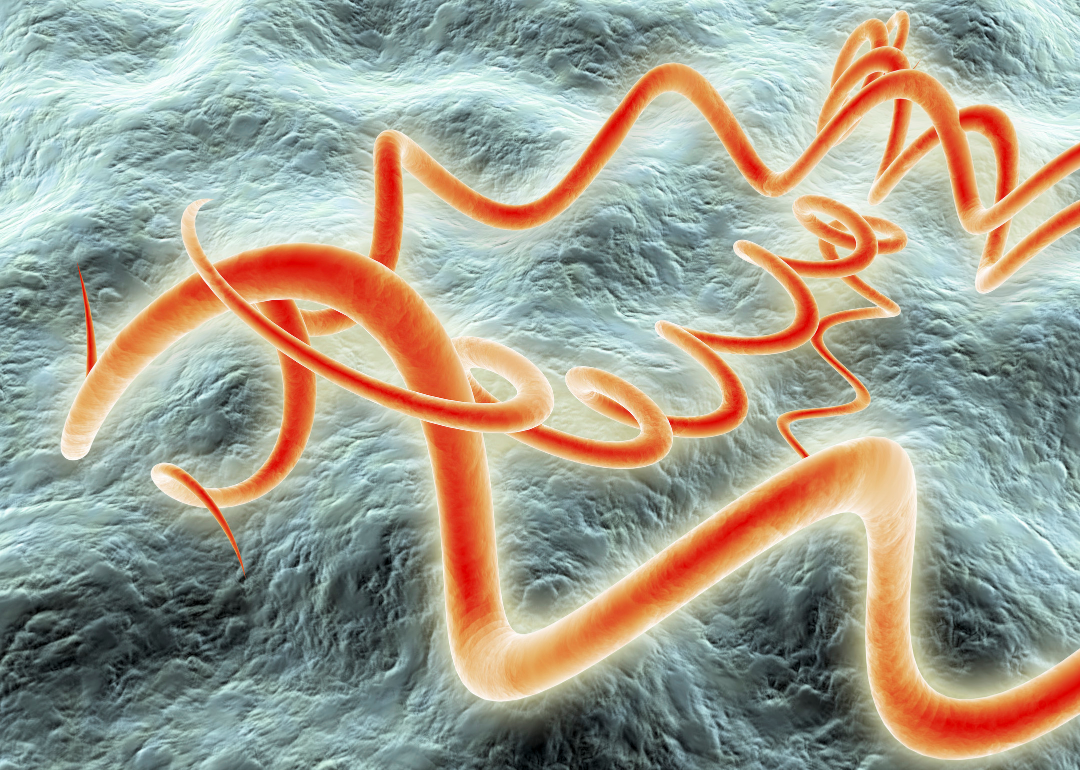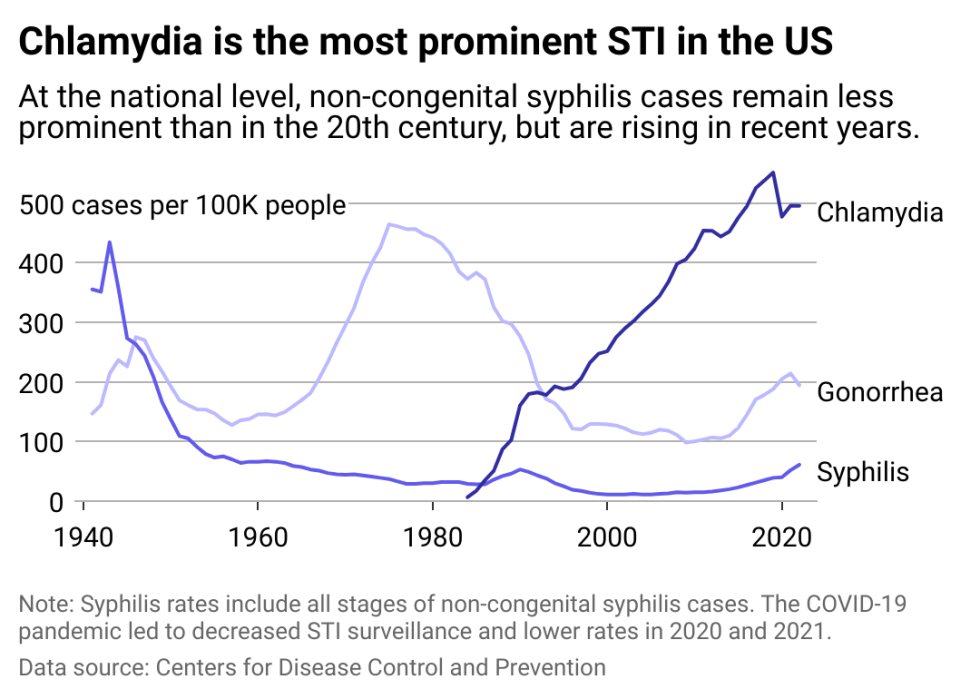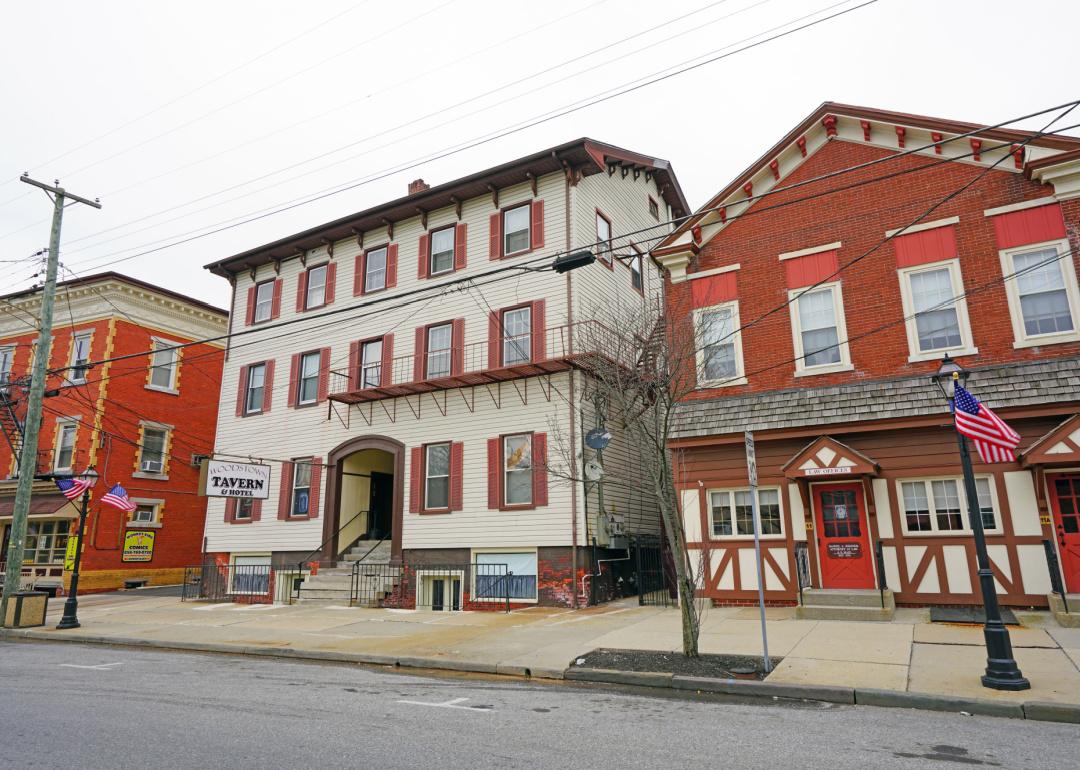
Counties with the highest STI rates in New Jersey
Sexually transmitted infections are on the rise, putting more people at risk as they spread. Chlamydia rates have nearly doubled since 2000, while the rate of gonorrhea went up by 50% over the same period. The Centers for Disease Control and Prevention reports that syphilis rates are reaching levels last seen in the 1950s.
But some regions of the U.S. are seeing higher rates than others.
Stacker used CDC data to look at which counties reported the highest rate of sexually transmitted infections in New Jersey. Counties are ranked by the rate of chlamydia infections, the most prominent STI at the national level, with gonorrhea and then syphilis rates serving as tiebreakers. This story focuses on bacterial infections, which can be cured, rather than viral infections such as HIV and herpes. At the county level, 2021 cases are the most recent available from the CDC, but state and national-level data for 2022 are also included. This story focuses on sexual transmissions and does not include congenital syphilis cases that were inherited from the mother.
Condoms are the most effective way to prevent the spread of STIs for people with multiple sexual partners, but research has found a decreasing rate of condom use among straight, bisexual, and gay male populations.
During the HIV/AIDS epidemic throughout the 1980s and 1990s, public health efforts advocating for condom use helped curb the spread of the virus. Today, however, condoms are no longer the only tool. Pills such as PrEP lower the risk of contracting HIV from sex by as much as 99%.
While more recent data is not available, the latest CDC survey from 2011-2015 showed less than half of unmarried men used condoms during the last time they had sex.
Among high school students having sex, the share using condoms has fallen from 60% in 2011 to 52% in 2021. While one-third of sexually active students used hormonal birth control, only 10% used both condoms and birth control. Methods like the pill and IUDs are effective at preventing pregnancy but do not stop the spread of STIs.
Chlamydia, gonorrhea, and syphilis are technically bacterial infections—meaning they can be cured with antibiotics—but they can still have lasting health impacts, including pelvic inflammatory disease and infertility. These risks are heightened when left untreated, which many STIs are as they don't obviously present themselves.
The CDC recommends annual testing for cisgender women, transgender men, and gender-nonconforming people with cervixes. It also recommends annual testing for males with male sexual partners. People in these groups who frequently have sex with anonymous partners should be tested every three to six months. Anyone with symptoms should always get tested according to the guidelines.
The CDC says there is little evidence that screening among straight men lowers the spread, and the agency's limited budget is put towards programs benefiting the most at-risk groups. However, some public health groups advocate for testing among all people regardless of sex and sexual orientation.
Data from the National Survey of Family Growth shows men on average have more opposite-sex sexual partners than women, and some argue that catching STIs throughout a sexual network rather than just for the most at-risk groups could curb their spread.
Soon, a pill may also help counter the spread of STIs. DoxyPEP can be taken 24 to 72 hours after unprotected sex and stops an STI before it becomes spreadable and symptomatic. The CDC has shared proposed guidelines recommending it for men who have sex with men and transgender women. The drug was originally approved for treating inhalation of anthrax, and doctors can prescribe it for off-label use.
Read on to see how STI infection rates in New Jersey compare nationally, and the top counties.

State-level statistics
- Gonorrhea cases: 100.7 per 100K (#43 nationally, 9,330 cases)
- Primary and secondary syphilis cases: 11.0 per 100K (#36 nationally, 1,018 cases)

#21. Hunterdon County
- Gonorrhea cases: 31.6 per 100K people (41 case)
- Syphilis cases (non-congenital): 8.5 per 100K people (11 case)
--- Primary and secondary syphilis: 3.1 per 100K people (4 cases)
--- Nonprimary and nonsecondary early syphilis: 5.4 per 100K people (7 cases)

#20. Sussex County
- Gonorrhea cases: 21.3 per 100K people (31 case)
- Syphilis cases (non-congenital): 5.5 per 100K people (8 cases)
--- Primary and secondary syphilis: 2.7 per 100K people (4 cases)
--- Nonprimary and nonsecondary early syphilis: 2.7 per 100K people (4 cases)

#19. Ocean County
- Gonorrhea cases: 36.2 per 100K people (235 cases)
- Syphilis cases (non-congenital): 5.2 per 100K people (34 cases)
--- Primary and secondary syphilis: 3.5 per 100K people (23 cases)
--- Nonprimary and nonsecondary early syphilis: 1.7 per 100K people (11 case)

#18. Morris County
- Gonorrhea cases: 29.0 per 100K people (148 cases)
- Syphilis cases (non-congenital): 6.8 per 100K people (35 cases)
--- Primary and secondary syphilis: 2.5 per 100K people (13 cases)
--- Nonprimary and nonsecondary early syphilis: 4.3 per 100K people (22 cases)

#17. Somerset County
- Gonorrhea cases: 48.0 per 100K people (166 cases)
- Syphilis cases (non-congenital): 11.6 per 100K people (40 cases)
--- Primary and secondary syphilis: 4.3 per 100K people (15 cases)
--- Nonprimary and nonsecondary early syphilis: 7.2 per 100K people (25 cases)

#16. Bergen County
- Gonorrhea cases: 56.3 per 100K people (537 cases)
- Syphilis cases (non-congenital): 13.2 per 100K people (126 cases)
--- Primary and secondary syphilis: 5.5 per 100K people (52 cases)
--- Nonprimary and nonsecondary early syphilis: 7.8 per 100K people (74 cases)

#15. Monmouth County
- Gonorrhea cases: 60.6 per 100K people (391 case)
- Syphilis cases (non-congenital): 13.0 per 100K people (84 cases)
--- Primary and secondary syphilis: 6.2 per 100K people (40 cases)
--- Nonprimary and nonsecondary early syphilis: 6.8 per 100K people (44 cases)

#14. Warren County
- Gonorrhea cases: 46.1 per 100K people (51 case)
- Syphilis cases (non-congenital): 8.1 per 100K people (9 cases)
--- Primary and secondary syphilis: 4.5 per 100K people (5 cases)
--- Nonprimary and nonsecondary early syphilis: 3.6 per 100K people (4 cases)

#13. Cape May County
- Gonorrhea cases: 45.0 per 100K people (43 cases)
- Syphilis cases (non-congenital): 5.2 per 100K people (5 cases)
--- Primary and secondary syphilis: 4.2 per 100K people (4 cases)
--- Nonprimary and nonsecondary early syphilis: 1.0 per 100K people (1 case)

#12. Middlesex County
- Gonorrhea cases: 70.1 per 100K people (603 cases)
- Syphilis cases (non-congenital): 16.6 per 100K people (143 cases)
--- Primary and secondary syphilis: 7.3 per 100K people (63 cases)
--- Nonprimary and nonsecondary early syphilis: 9.3 per 100K people (80 cases)

#11. Gloucester County
- Gonorrhea cases: 99.5 per 100K people (303 cases)
- Syphilis cases (non-congenital): 12.2 per 100K people (37 cases)
--- Primary and secondary syphilis: 7.9 per 100K people (24 cases)
--- Nonprimary and nonsecondary early syphilis: 4.3 per 100K people (13 cases)

#10. Burlington County
- Gonorrhea cases: 101.7 per 100K people (472 cases)
- Syphilis cases (non-congenital): 16.8 per 100K people (78 cases)
--- Primary and secondary syphilis: 10.1 per 100K people (47 cases)
--- Nonprimary and nonsecondary early syphilis: 6.7 per 100K people (31 case)

#9. Union County
- Gonorrhea cases: 109.4 per 100K people (626 cases)
- Syphilis cases (non-congenital): 33.7 per 100K people (193 cases)
--- Primary and secondary syphilis: 16.4 per 100K people (94 cases)
--- Nonprimary and nonsecondary early syphilis: 17.3 per 100K people (99 cases)

#8. Hudson County
- Gonorrhea cases: 134.2 per 100K people (943 cases)
- Syphilis cases (non-congenital): 45.0 per 100K people (316 cases)
--- Primary and secondary syphilis: 16.2 per 100K people (114 cases)
--- Nonprimary and nonsecondary early syphilis: 28.8 per 100K people (202 cases)

#7. Mercer County
- Gonorrhea cases: 163.3 per 100K people (630 cases)
- Syphilis cases (non-congenital): 17.6 per 100K people (68 cases)
--- Primary and secondary syphilis: 9.3 per 100K people (36 cases)
--- Nonprimary and nonsecondary early syphilis: 8.3 per 100K people (32 cases)

#6. Salem County
- Gonorrhea cases: 181.4 per 100K people (118 cases)
- Syphilis cases (non-congenital): 12.3 per 100K people (8 cases)
--- Primary and secondary syphilis: 10.8 per 100K people (7 cases)
--- Nonprimary and nonsecondary early syphilis: 1.5 per 100K people (1 case)

#5. Passaic County
- Gonorrhea cases: 161.0 per 100K people (834 cases)
- Syphilis cases (non-congenital): 23.7 per 100K people (123 cases)
--- Primary and secondary syphilis: 10.0 per 100K people (52 cases)
--- Nonprimary and nonsecondary early syphilis: 13.7 per 100K people (71 case)

#4. Atlantic County
- Gonorrhea cases: 147.3 per 100K people (405 cases)
- Syphilis cases (non-congenital): 14.9 per 100K people (41 case)
--- Primary and secondary syphilis: 7.3 per 100K people (20 cases)
--- Nonprimary and nonsecondary early syphilis: 7.6 per 100K people (21 case)

#3. Camden County
- Gonorrhea cases: 255.5 per 100K people (1,338 cases)
- Syphilis cases (non-congenital): 42.6 per 100K people (223 cases)
--- Primary and secondary syphilis: 25.2 per 100K people (132 cases)
--- Nonprimary and nonsecondary early syphilis: 17.4 per 100K people (91 case)

#2. Essex County
- Gonorrhea cases: 237.2 per 100K people (2,028 cases)
- Syphilis cases (non-congenital): 50.4 per 100K people (431 case)
--- Primary and secondary syphilis: 17.3 per 100K people (148 cases)
--- Nonprimary and nonsecondary early syphilis: 33.1 per 100K people (283 cases)

#1. Cumberland County
- Gonorrhea cases: 194.0 per 100K people (298 cases)
- Syphilis cases (non-congenital): 18.2 per 100K people (28 cases)
--- Primary and secondary syphilis: 6.5 per 100K people (10 cases)
--- Nonprimary and nonsecondary early syphilis: 11.7 per 100K people (18 cases)
This story features data reporting and writing by Emma Rubin and is part of a series utilizing data automation across 49 states.



